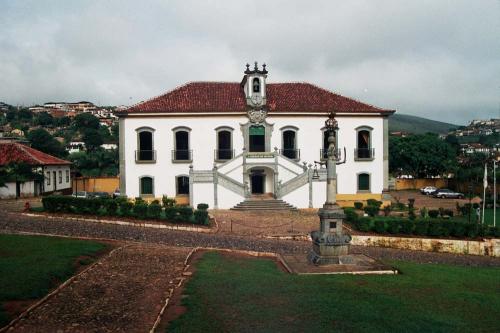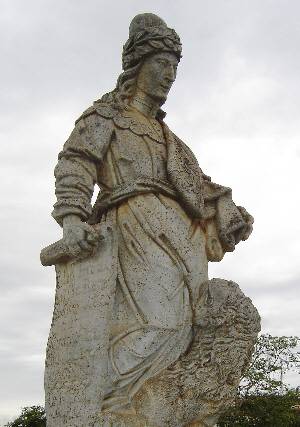|
Plinio Corrêa de Oliveira
Two Cities Mirror Two Eras
|
|
|
The modern city is of imprecise contours; like a tumor that extends itself here, there, and everywhere, [the modern city] grows extensively in one certain direction, while in other areas there yet exist parks which extend almost to the downtown district. The medieval city gives the impression of a well-minted coin. It is replete with houses in an enclosed area defined by a wall and distinguished with towers. The limits are definite and clear: beyond the wall is the countryside; within the wall is the city.
The wall is the splendor of the city. About itself, the city has a crown made up of walls, ensuring it’s self-defense and continued autonomy. Seen thus, the city gives the impression of a treasure chest, for from within it emerge precious things: the towers of the churches, the facades of the cathedrals with their rose-windows and stained glass, the towers of this or that palace, etc. One could say that there is a kind of competition among the towers [of the city] to see which might attain the heavens. The bystreets of the medieval city are to the square and right-angled city blocks of our days more or less as calligraphy is to the typewritten word: typewritten characters are irreproachable; manuscript characters are often irregular and even ugly, but within them is contained the expression of a soul. What do these urban rectangles express? The souls of men without a soul… It is difficult to know Truth and Good when the senses aren’t touched by the Beautiful. The charm proper to the life of the lower bourgeois is made up of the ease, naturality, intimacy and warmth that one notes in this room. It constitutes an enclosed world. Within it, a man feels himself within a specific moral atmosphere, entirely different from the street, which perhaps the window faces, but which psychologically remains a thousand leagues from the painter and the model. A closed ambience, yes, yet not one empty and lifeless. Various clarities of various kinds penetrate it. A splendid light enters through the window and inundates the model, becoming a suave and intelligent half-light upon reaching the painter. A marble floor serves to increase it a little, and gives to this almost poor ambience a pleasantly contradictory note of richness and distinction. The human soul has need of enclosures in which ambiences are organized and made up according to it’s proper necessities, [in the same manner that] the body needs a house and shelter in order that it not fade away.
Who wouldn’t notice the strength, stability, and logic characteristic of the Portuguese, contained in this building full of good sense, equilibrium, and grace, which is the Town Hall and Jail of Mariana, reproduced upon this page? Meanwhile, who [also] wouldn’t notice it’s Brazilian mark, expressed in it’s simplicity, in a certain appearance it has of being a family house, in a special goodness free of any vulgarity, that distinguishes everything that is authentically ours [Brazilian]?
Statue of Ezechial A complex, rational, and robust cultural work, the product of entire generations of men of good sense and taste – in the case of Brazil, of men enjoying the gift of gifts, the true Faith – which it behooves us to preserve from the iconoclastic cosmopolitanism of these days which pass. The feline gaze of Ezechial seems to traverse the centuries, analyzing a remote future that his vigorous lips are about to herald to men.
Statue of the Prophet Daniel sculpted by Aleijadinho in front of the church of Bom Jesus at Congonhas, Brazil. Daniel is as manly as Ezechial, yet his physiognomy is more suave. His meditative gaze seems to take in the landscape without seeing it, as if it had been intercepted, in an ideal zone of space, by an entire world of august and pious visions passing before him. O Universo é uma Catedral: Excertos do pensamento de Plinio Corrêa de Oliveira recolhidos por Leo Daniele, Edições Brasil de Amanhã, São Paulo, 1997, pgs. 42-49. |
|







